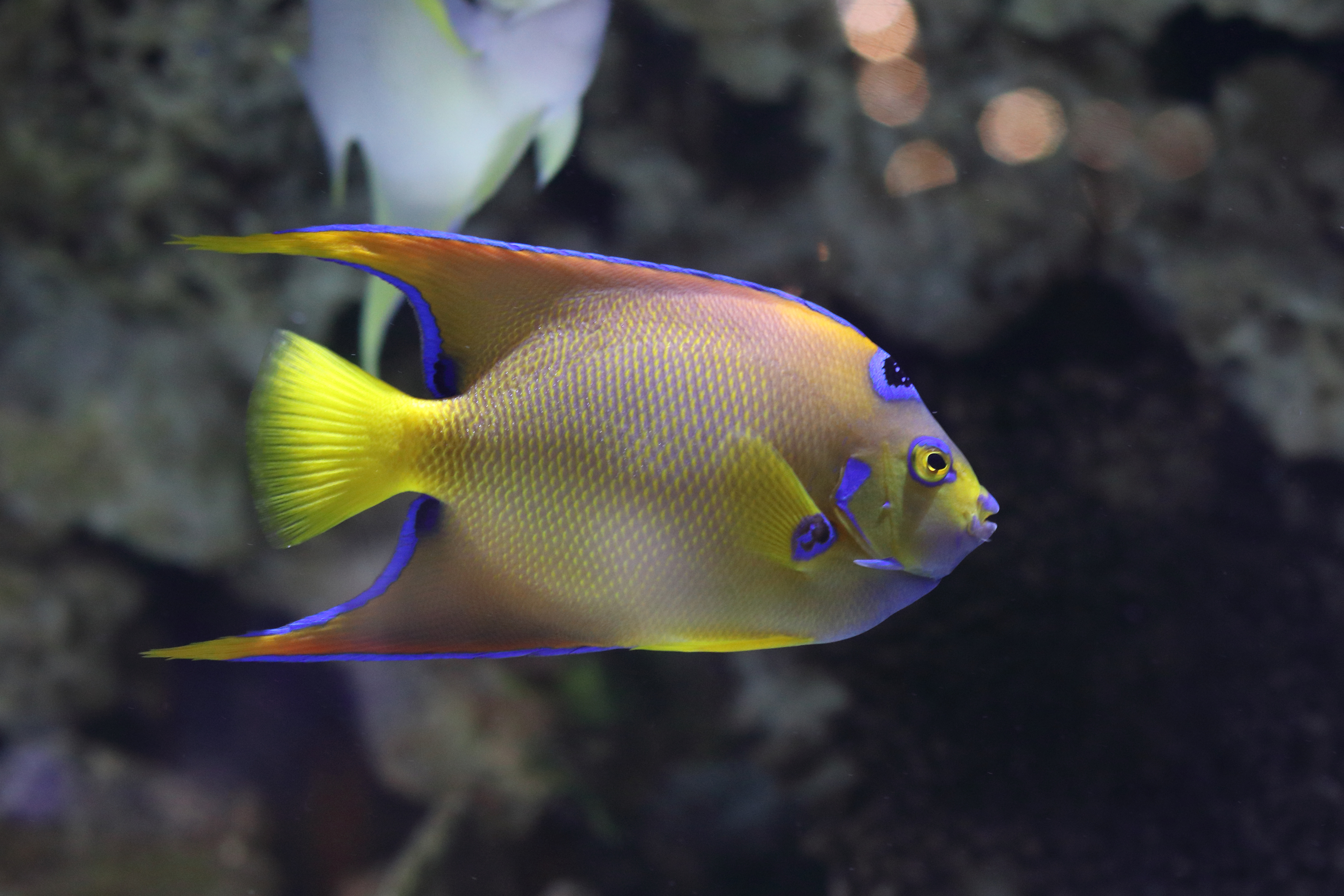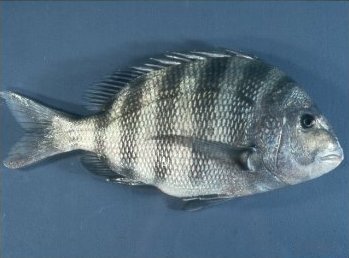|
Microcotyle
''Microcotyle'' is a genus which belongs to the phylum Platyhelminthes and class Monogenea. Species of ''Microcotyle'' are ectoparasites that affect their host by attaching themselves as larvae on the gills of the fish and grow into adult stage. This larval stage is called oncomiracidium, and is characterized as free swimming and ciliated. Species of ''Microcotyle'' have only one host in their entire life cycle. Different species of ''Microcotyle'' inhabit marine and freshwater and they can also infect different species of fishes. They are uniquely characterized by their haptor having a lot of tiny clamps on the lateral margins. Although not really known to cause that much damage in marine wildlife, some of them are reported to cause agricultural problems like ''Microcotyle sebastis'' as an example. ''Microcotyle sebastis'' commonly affects ''Sebastes schlegeli'', a maricultured fish in Korea.Kim, Ki. H, and Eun. Lee, and Se. Kwon, and Jae. Cho. (2001). Treatment of ''Microco ... [...More Info...] [...Related Items...] OR: [Wikipedia] [Google] [Baidu] |
Microcotyle Donavini
''Microcotyle donavini'' is a species of monogenean, parasitic on the gills of a marine fish. It belongs to the family Microcotylidae. Taxonomy ''Microcotyle donavini'' was described by Van Beneden & Hesse in 1863.Van Beneden, P. J., & Hesse, C. E. (1863). Recherches sur les Bdellodes (Hirudinées) et les trématodes marins: Mémoire présenté à l'Académie Royale de Belgique. Mémoires de l'Académie Royale des Sciences, des Lettres et des Beaux-Arts de Belgique, 34, 1-150 + Plates. This species was redescribed by Scott (1905) who gave one figure Scott (T.), 1905. — Observations on some parasites new or rare in Scottish waters. 23, rd. Rep. Fish. Bd. Scot. (3) Sci. Invest. p. 108-119 fig. and by Euzet & Marc in 1963, one hundred years later. ''Microcotyle donavini'' is the type-species of the genus ''Microcotyle''. Unnithan (1971) placed ''M. donavini'' in the nominal subgenus ''Microcotyle'' as ''Microcotyle (Microcotyle) donavini''.Unnithan, R. V. (1971). On the fun ... [...More Info...] [...Related Items...] OR: [Wikipedia] [Google] [Baidu] |
Microcotyle Angelichthys
''Microcotyle angelichthys'' is a species of monogenean, parasitic on the gills of a marine fish. It belongs to the family Microcotylidae.MacCallum, G.A. (1913) Further notes on the genus ''Microcotyle''. Zoologische Jahrbücher. Abteilung für Systematik, Geographie und Biologie der Tiere, 35, 389-402PDF in BHL Systematics ''Microcotyle angelichthys'' was described by MacCallum in 1913 from the gills of ''Holacanthus ciliaris'' ( Pomacanthidae ) collected at New York Aquarium. Tripathi (1956) created the new subgenus ''Microcotyle'' in which he placed ''M. angelichthys''. Tripathi, Y. R. (1956)Studies on the parasites of Indian fishes. IV. Trematoda: Monogenea, Mictoeotylidae Records of the Indian Museum, 52(2/4), 231-247. As Tripathi (1956) listed species within each subgenus in alphabetical order, without designating a type species, his subgeneric names and grouping were considered invalid. Unnithan, R. V. (1971). On the functional morphology of a new fauna of Monogen ... [...More Info...] [...Related Items...] OR: [Wikipedia] [Google] [Baidu] |
Microcotyle Archosargi
''Microcotyle archosargi'' is a species of monogenean, parasitic on the gills of a marine fish. It belongs to the family Microcotylidae.MacCallum, G.A. (1913) Further notes on the genus ''Microcotyle''. Zoologische Jahrbücher. Abteilung für Systematik, Geographie und Biologie der Tiere, 35, 389-402PDF in BHL It was first described by MacCallum in 1913 based on ten specimens. Hargis (1956) pointed out that the description and figures given by MacCallum were poor in details. Systematics In 1971, Unnithan created the combination ''Microcotyle Scintillovulva archosargi'', but Unnithan's assignment of ‘‘(MacCallum, 1913) comb. n.’’ as authorship of ''M. (S.) archosargi'' was considered incorrect according to the International Code of Zoological Nomenclature by Kritsky & Bakenhaster. ''Microcotyle archosargi'' was transferred by Caballero & Bravo-Hollis to the genus ''Paramicrocotyle'' as ''Paramicrocotyle archosargi'' n. comb.Caballero y Caballero, E., & Bravo-Hollis, M ... [...More Info...] [...Related Items...] OR: [Wikipedia] [Google] [Baidu] |
Microcotyle Algeriensis
''Microcotyle algeriensis'' is a species of monogenean, parasitic on the gills of a marine fish. It belongs to the family Microcotylidae. Systematics ''Microcotyle algeriensis'' was described Ayadi ''et al''., in 2017, from the gills of the small red scorpionfish '' Scorpaena notata'' (Scorpaenidae) collected at Bouharoune off the Algerian coast. In the same paper, Ayadi ''et al''., (2017) collected another species of ''Microcotyle'' from the gills of ''Helicolenus dactylopterus'', that differes from ''M. algeriensis'' by morphology and COI sequence; and from ''M. sebastis'' by COI sequence. However, the authors refrained from describing ''Microcotyle'' sp. from ''Helicolenus dactylopterus'' as new because ''M. sebastis'' (originally described from scorpaeniform fishes off Japan) has been recorded in various hosts in the North and South Pacific, Atlantic and Mediterranean (for the latter, in the same host, ''H. dactylopterus''). Thus, Ayadi ''et al''., (2017) suggested tha ... [...More Info...] [...Related Items...] OR: [Wikipedia] [Google] [Baidu] |
Microcotyle Aigoi
''Microcotyle aigoi'' is a species of monogenean, parasitic on the gills of a marine fish. It belongs to the family Microcotylidae.石井信太郎・澤田利貞 (1937). 外部寄生性吸蟲類ノ研究. 日本寄生虫学会記事 9: 93-97. (Ishii, N. and Sawada, T. (1937). tudies on the ectoparasitic trematodes Nihon Kiseichū Gakkai Kiji 9: 3-97. n Japanese Morphology ''Microcotyle aigoi'' is 2-3.7 mm in length and 0.2-0.4 mm in width and has the general morphology of all species of ''Microcotyle'', with a flat body, comprising an anterior part which contains most organs and a posterior part called the haptor. The haptor is symmetrical and bears a number of clamps, arranged as two rows, one on each side. The clamps of the haptor attach the animal to the gill of the fish. There are also two small buccal suckers at the anterior extremity. The digestive organs include an anterior, terminal mouth, a muscular pharynx, and a posterior intestine with two lateral blind-end ... [...More Info...] [...Related Items...] OR: [Wikipedia] [Google] [Baidu] |
Oncomiracidium
An oncomiracidium is the ciliated and free-living larva of a monogenean, a type of parasitic flatworm commonly found on fish. It is similar to the miracidium of Trematoda, but has sclerotised Sclerotin is a component of the cuticle of various Arthropoda, most familiarly insects. It is formed by cross-linking members of particular classes of protein molecules, a biochemical process called sclerotization, a form of tanning in which qu ... (hardened) hooklets not found in the latter. References Monogenea {{Monogenea-stub ... [...More Info...] [...Related Items...] OR: [Wikipedia] [Google] [Baidu] |
Microcotylidae
Microcotylidae is a family of polyopisthocotylean monogeneans.WoRMS (2018). Microcotylidae Taschenberg, 1879. Accessed at: http://www.marinespecies.org/aphia.php?p=taxdetails&id=119247 on 2018-12-03 All the species in this family are parasitic on fish. Subfamilies According to the World Register of Marine Species, the family includes 7 subfamilies: * Anchoromicrocotylinae Bravo-Hollis, 1981 Bravo-Hollis, M. (1981). Helmintos de peces del Pacífico mexicano XXXVI. Sobre un género y subfamilia nuevos de la familia Microcotylidae Taschenberg, 1879. Emend. Anales del Instituto de Ciencias del Mar y Limnología, Universidad Nacional Autónoma de México, 8, 305-314 * Atriasterinae Maillard & Noisy, 1979 Maillard, C., & Noisy, D. (1979). ''Atrispinum acarne'' n g n sp.(Monogenea, Microcotylidae) parasite de ''Pagellus acarne'' (Teleostei) du golfe du Lion. Vie et Milieu, 28(29), 4. including ''Sparicotyle chrysophrii'' * Metamicrocotylinae Yamaguti, 1963 Yamaguti S. 1963. Systema He ... [...More Info...] [...Related Items...] OR: [Wikipedia] [Google] [Baidu] |
Polyopisthocotylea
Polyopisthocotylea is a subclass of parasitic flatworms in the class Monogenea. WoRMS (2019). Polyopisthocotylea. Accessed at: http://www.marinespecies.org/aphia.php?p=taxdetails&id=119220 on 2019-02-08Yamaguti, S. (1963). Systema Helminthum Volume IV Monogenea and Aspidocotylea: John Wiley & Sons.Hayward, C. (2005). Monogenea Polyopisthocotylea (ectoparasitic flukes). In K. Rohde (Ed.), Marine Parasitology (pp. 55-63): CSIRO, Collingwood, Australia & CABI, Oxon, UK. Classification There are only two subclasses in the class Monogenea: * Monopisthocotylea. The name means "a single posterior sucker" - the attachment organ (the haptor) is simple. * Polyopisthocotylea. The name means "several posterior suckers" - the attachment organ (the haptor) is complex, with several clamps or suckers. The subclass Polyopisthocotylea contains the four following orders: * Order Chimaericolidea * Order Diclybothriidea * Order Mazocraeidea * Order Polystomatidea Examples of species * ''Mi ... [...More Info...] [...Related Items...] OR: [Wikipedia] [Google] [Baidu] |
Pharynx
The pharynx (plural: pharynges) is the part of the throat behind the mouth and nasal cavity, and above the oesophagus and trachea (the tubes going down to the stomach and the lungs). It is found in vertebrates and invertebrates, though its structure varies across species. The pharynx carries food and air to the esophagus and larynx respectively. The flap of cartilage called the epiglottis stops food from entering the larynx. In humans, the pharynx is part of the digestive system and the conducting zone of the respiratory system. (The conducting zone—which also includes the nostrils of the nose, the larynx, trachea, bronchi, and bronchioles—filters, warms and moistens air and conducts it into the lungs). The human pharynx is conventionally divided into three sections: the nasopharynx, oropharynx, and laryngopharynx. It is also important in vocalization. In humans, two sets of pharyngeal muscles form the pharynx and determine the shape of its lumen. They are ... [...More Info...] [...Related Items...] OR: [Wikipedia] [Google] [Baidu] |
Platyhelminthes
The flatworms, flat worms, Platyhelminthes, or platyhelminths (from the Greek πλατύ, ''platy'', meaning "flat" and ἕλμινς (root: ἑλμινθ-), ''helminth-'', meaning "worm") are a phylum of relatively simple bilaterian, unsegmented, soft-bodied invertebrates. Unlike other bilaterians, they are acoelomates (having no body cavity), and have no specialized circulatory and respiratory organs, which restricts them to having flattened shapes that allow oxygen and nutrients to pass through their bodies by diffusion. The digestive cavity has only one opening for both ingestion (intake of nutrients) and egestion (removal of undigested wastes); as a result, the food cannot be processed continuously. In traditional medicinal texts, Platyhelminthes are divided into Turbellaria, which are mostly non-parasitic animals such as planarians, and three entirely parasitic groups: Cestoda, Trematoda and Monogenea; however, since the turbellarians have since been proven not to be monop ... [...More Info...] [...Related Items...] OR: [Wikipedia] [Google] [Baidu] |
Kidney
The kidneys are two reddish-brown bean-shaped organs found in vertebrates. They are located on the left and right in the retroperitoneal space, and in adult humans are about in length. They receive blood from the paired renal arteries; blood exits into the paired renal veins. Each kidney is attached to a ureter, a tube that carries excreted urine to the bladder. The kidney participates in the control of the volume of various body fluids, fluid osmolality, acid–base balance, various electrolyte concentrations, and removal of toxins. Filtration occurs in the glomerulus: one-fifth of the blood volume that enters the kidneys is filtered. Examples of substances reabsorbed are solute-free water, sodium, bicarbonate, glucose, and amino acids. Examples of substances secreted are hydrogen, ammonium, potassium and uric acid. The nephron is the structural and functional unit of the kidney. Each adult human kidney contains around 1 million nephrons, while a mouse kidney ... [...More Info...] [...Related Items...] OR: [Wikipedia] [Google] [Baidu] |




_Oncomiracidium_(Euzet_&_Marc).png)


